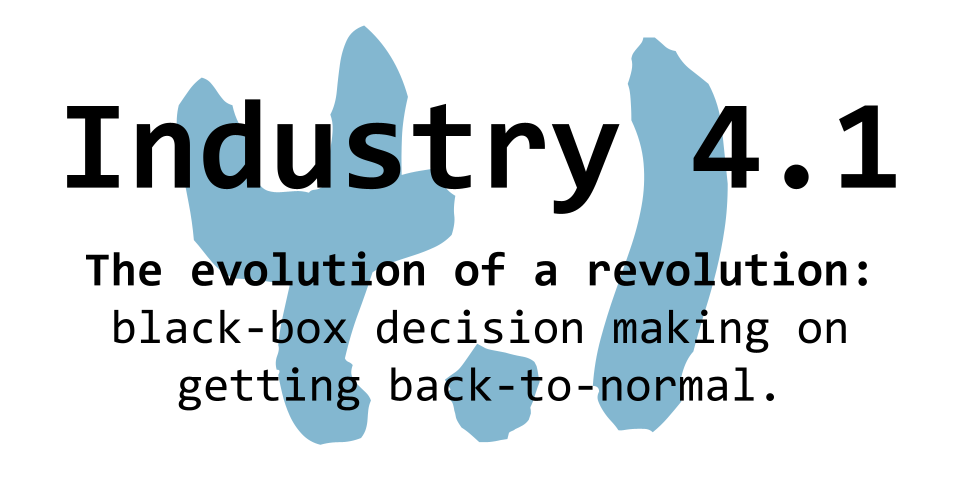April 1st, 2021 marks the start of the first full month of the second year of the COVID-19 global pandemic. In short, it has been a very long time since things have been “normal”. Can we even define what exactly “normal” has become? And what it will mean to get “back-to-normal”?
For businesses which have adopted Industry 4.1 practices, such as those using reelyActive open source technology, the answer is YES. The baseline data from their connected spaces collected ahead of lockdowns and restrictions quantifies perfectly what was—and therefore remains—“normal”.
The forward-looking businesses which embraced Industry 4.1 can today quantify and impose what “back-to-normal” means for the occupants of their physical spaces.
For those unfamiliar with the concept of Industry 4.1, it is simply Industry 4.0—the next industrial revolution—but with a critical revision: instead of advancing revolutionary processes, it simply applies buzzword technologies such as “IoT” and “AI” to current outdated and inefficient processes, needlessly extending their obsolescence.
For example, the time series below illustrates the pioneering Industry 4.1 concept of using the advanced machine-learning (ML) technique of “extrapolation” to extend what was “normal” in Q1 2020 over the “not normal” pandemic year to establish precisely what “back-to-normal” will be.

Consider now the specific example of a brick-and-mortar retailer. Aside from early runs on toilet paper (no pun intended), the “not normal” period for retail consisted largely of consumers shifting their business towards e-commerce, enjoying the convenience of one-click ordering and home delivery at the expense of the social interactions of fighting for a parking space and waiting in line. However, the savvy 4.1-retailer can fully reopen with the data-backed confidence of reestablishing the perfect “back-to-normal” experience for their clients as the diagram below illustrates.

“We have the data to recreate ‘normal’ queuing inconveniences for our clients” said April Fu, manager of a local grocery store, adding that
“complaining about wait times with strangers in a queue is actually a form of social interaction that people have been sorely lacking in the past year.”
Success stories are not limited just to retail. With many offices planning to reopen, managers are using occupancy analytics data from 2019 to decide exactly what “back-to-work-as-normal” will mean for their employees.
“I’ve had employees on Zoom calls suggest that this is the perfect opportunity to evolve the workplace to meet the new reality” said Joe K’Sonyu, head of advanced strategic alignment initiatives at a Fortune 500 company, affirming that
“if technologies with acronyms we don’t understand tell us what ‘back-to-normal’ means, then we’d best blindly trust them over our own intuitions about the future of work!”
Indeed, in the age of Industry 4.1, it would be foolish to allow ourselves to be misled simply by our own reason and intuition!
